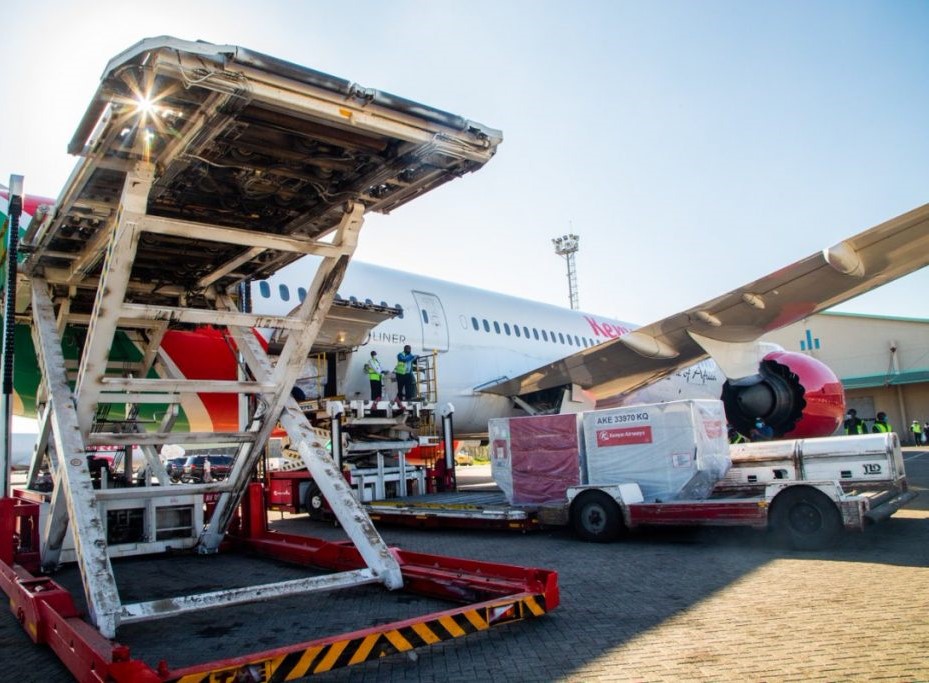
Kenya’s flower industry is suffocating under a cargo crisis. Sky-high freight rates, dumped harvests, and blocked export routes are squeezing growers, with revenues already down KSh10 billion. As Ethiopia powers ahead with government-backed freighters, Kenyan farmers warn: open the skies or risk losing Africa’s floral crown.
At the official opening of the International Floriculture Trade Expo (IFTEX) 2025 , government officials and industry leaders acknowledged the growing strain on exporters. The sector is contending with limited cargo space, shifting phytosanitary regulations, climate-related disruptions, and stricter European Union sustainability rules.
The airfreight squeeze emerged in November 2024 when several international airlines either reduced cargo operations or re-routed flights away from Nairobi. The abrupt cutback left flower exporters scrambling for space during peak periods like Valentine’s Day, Mother’s Day, and International Women’s Day.
“This has been one of the toughest seasons in recent memory,” said Clement Tulezi, Chief Executive Officer of the Kenya Flower Council (KFC). “Farms had no option but to discard up to 40 percent of their flowers during critical export windows simply because there wasn’t enough outbound space. The financial and reputational costs have been enormous.”
At the height of the crisis, freight rates surged from an average of $2.20 per kilogram to $4.50. Though rates have since eased slightly to around $3.90, they remain uncomfortably high in an industry where logistics can consume up to 40 percent of production costs.
Structural Gaps Deepening the Challenge
Kenya’s heavy reliance on foreign airlines for flower exports has long exposed the industry to external shocks. Kenya Airways (KQ), the national carrier, primarily operates passenger services and lacks the dedicated freighter fleet required to support the sector’s export peaks. Ethiopia, by contrast, has invested aggressively in state-backed cargo operations, giving it a competitive edge in global markets.
Further complicating matters is Kenya’s aviation policy, which grants KQ considerable influence over the allocation of landing rights for foreign cargo airlines, a policy that stakeholders argue limits market responsiveness during high-demand seasons.
“The issue is not just capacity, it’s access,” Tulezi emphasized. “We need to open up our skies, especially from January to May when demand is at its highest. Denying willing international cargo carriers the opportunity to operate during these critical months places the entire supply chain in jeopardy.”
Industry Proposals on the Table
To ease the bottleneck, the Kenya Flower Council and other exporters have tabled several proposals with the Ministry of Transport and the Kenya Civil Aviation Authority (KCAA). These include fast-tracking approvals for non-scheduled cargo flights, particularly from Middle East hubs like Dubai, where freighter capacity is readily available.
Stakeholders are also urging a review of high landing fees and related charges at Jomo Kenyatta International Airport, which many operators consider excessive. The goal is to lower or temporarily waive these costs for airlines moving horticultural exports during periods of acute freight demand.
In addition, there’s growing pressure on Kenya Airways to explore leasing arrangements or partnerships with established cargo-focused airlines to boost available capacity without jeopardizing its core operations.
“We’re presenting practical, workable solutions,” Tulezi noted. “This isn’t about pointing fingers; it’s about securing an industry that directly supports over 200,000 jobs and generates more than half of Kenya’s horticultural export earnings.”
Export Revenue Already Hit
The crisis has taken a measurable toll. Kenya’s flower export revenue dropped from KSh110 billion in 2023 to just under KSh100 billion in 2024, a decline attributed in part to freight disruptions that prevented flowers from reaching key markets during high-demand periods.
Smaller and mid-sized flower farms are particularly vulnerable. “If freight costs keep rising, labor will be the next area to cut,” one grower warned. “And that’s devastating for a sector employing over 200,000 Kenyans.”
Regional Rivalry Intensifies
Ethiopia’s flower industry continues to gain ground, bolstered by efficient logistics, government-backed freighters, and a cohesive export strategy. While Kenya remains Africa’s top flower exporter by volume, shipping over 240,000 tonnes of fresh flowers in 2024, its competitive advantage is under threat.
Government Vows Immediate Action
Agriculture Cabinet Secretary Mutahi Kagwe acknowledged the seriousness of the freight crisis during his address at IFTEX and pledged swift government intervention.
“Some of these challenges can be resolved quickly through adjustments in cargo access policy and transport approvals,” Kagwe said. “We cannot allow logistical shortcomings to jeopardize our leading agricultural export sector.”
He likened the situation to “a child clutching more oranges than they can eat while denying others the chance to pick them,” and called for a decisive policy shift prioritizing efficiency and competitiveness over protectionism.
“We need a system that prioritizes the industry’s future, not one that protects legacy systems at its expense. I’ll be engaging fellow cabinet members and regulators to chart a coordinated response that strengthens Kenya’s position in the global horticulture trade,” the CS added.
A Sector Worth Defending
In 2024, Kenya’s total horticultural exports were valued at KSh136 billion, with cut flowers accounting for 53 percent, followed by fruits at 30 percent and vegetables at 17 percent. Key markets include the EU, UK, Australia, the Middle East, and Asia.
While Kenya still holds distinct advantages, including a liberal investment climate, Nairobi’s strategic air cargo hub, and a highly skilled workforce, industry insiders warn these will count for little if the country’s logistical backbone fails to keep pace.
“Freight should not be the reason Kenya relinquishes its leadership in the global flower trade,” Tulezi concluded. “We’ve built this industry over decades. Now it needs decisive action to protect it.”
